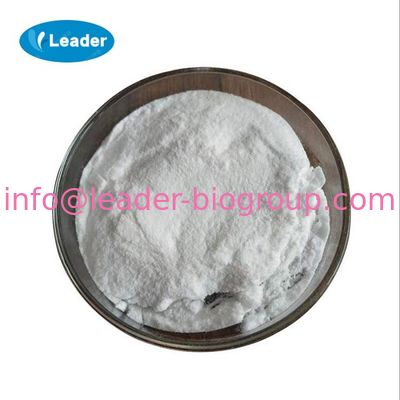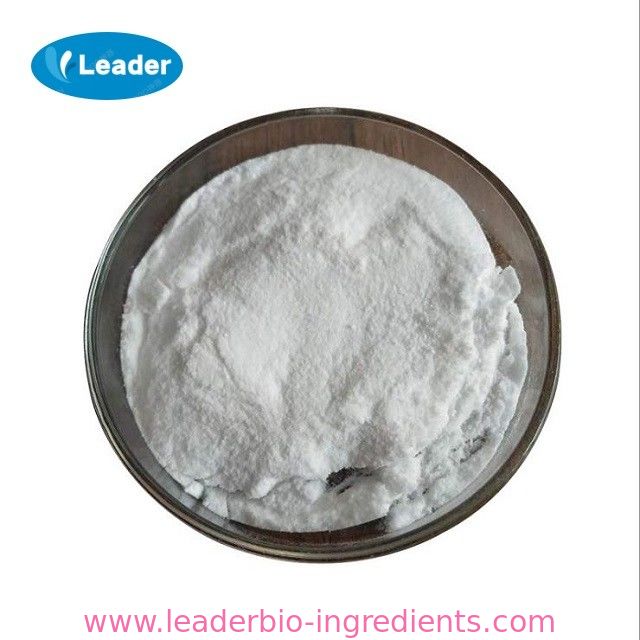| Physicochemical properties |
Sodium dichloroisocyanurate is white crystalline powder and has a strong smell of chlorine gas, containing available chlorine 60% to 64.5%. It has a stable property, and when stored in high temperature and humid areas, the reduction of available chlorine is only about 1%. It is easily dissolved in water and the solubility is 25%(25℃). The solution is weak acid and PH in 1% of the aqueous solution is 5.8 to 6.0. PH has little change while the concentration of the solution increased. When dissolved in water, sodium dichloroisocyanurate will generate hypochlorous, of which the hydrolysis constant is 1×10-4 higher than that of chloramines-T. The stability of the aqueous solution is poor. Under the ultraviolet light, the loss of the active chlorine would be accelerated. Sodium dichloroisocyanurate solution with low concentration can quickly kill all kinds of vegetative forms of bacteria, fungi and virus ,especially for hepatitis virus. The solution has several characteristics such as with high chlorine content, strong sterilization effect, simple process and low-cost. In addition, sodium dichloroisocyanurate is of low toxicity, and its sterilization effect is better than that of bleaching powder and chloramines-T. Mixing metal reducing agents or acid synergist with potassium permanganate and sodium dichloroisocyanurate powder can produce chlorine smoke fumigant or acid chloride smoke fumigant. Once lighted, such smoke fumigant will give off gas with strong sterilization effect. |
| Chlorine-containing disinfectants |
Sodium dichloroisocyanurate, bleaching powder, dibasic tricalcium hypochlorite and sodium hypochlorite are several chlorine-containing disinfectants which are generally used in China. The disinfection capability of chlorine-containing disinfectant is mainly determined by the content of the available chlorine it contained. The higher the content of available chlorine is, the stronger the ability of disinfection is. When dissolved in water, chlorine-containing disinfectants form hypochlorous which has sterilization effect. Hypochlorous produced by bleaching power or dibasic tricalcium hypochlorite in the solution is associated with the PH of the solution. The lower PH in the solution is, the more hypochlorous it will produce. Due to a higher hydrolysis constant, the sterilization capability of sodium dichloroisocyanurate is stronger than most other chloramine disinfectants. Compared with hypochlorite disinfectants, the sterilization capability of sodium dichloroisocyanurate is weaker in low concentration of solution; while in high concentration of the solution, the solution can keep weak acidity. Therefore, the sterilization effect of sodium dichloroisocyanurate sometimes can be better than that of hypochlorite disinfectants. Chlorine-containing disinfectants mentioned above have good broad-spectrum germicidal efficacy and killing effects on vegetative form of bacteria, virus, fungal spore and bacterial spore.
sodium dichloroisocyanurate is one of the chlorinated isocyanuric acid disinfectants. Congeneric products also include chloroisobromine acid, trichloroisocyanuric acid, dichlord isocyanurice acid, potassium dichloroisocyanurate and so on. This product and other chlorinated isocyanuric acid disinfectants have a wide bactericidal spectrum and strong sterilization effect on vegetative form of bacteria, virus, fungal spore and bacterial spore. They also have strong killing effect on various bacterial(eg. escherichia coli, staphylococcus aureus ), virus(eg. hepatitis virus), bacterial spores(eg. spores of bacillus subtilis var niger) and fungus. In the effective concentration of the solution, this product can kill 99.9% escherichia in 30 minutes, all bacteria spores in five to thirty minutes and all hepatitis virus in five minutes. Besides, this product also have the function to destroy surface antigen of type B hepatitis virus. Sodium dichloroisocyanurate has a better killing effect in the acidic conditions. The lower PH is, the better effect it has. This product has a good stability of chemical property and exists no carcinogenic potential. This product can be used for disinfection in water, processing equipment in food factory, tableware, food, vehicles, animal buildings, magnanerie, fishpond and utensil and so on.
The above information is edited by the Chemicalbook Bai Linlin. |
| Uses |
1. This product can be used as a disinfectant for industrial water, portable water, swimming pool and textile finishing agent. It also can be used for preventive disinfection and disinfection in all kinds of places such as sericulture, livestock, poultry and fish breeding. This product can also be used for finishing wool preshrunk, bleaching in textile industry, removing algae in industrial recirculating water and chlorinating agent for rubber. The product is stable, efficient and has no negative effect for human.
2. GB 2760-96 stipulates sodium dichloroisocyanurate as processing aid for food industry. This product can be used as disinfection for milk product and water. This product can quickly kill all kinds of bacteria, fungus, spores and hepatitis virus A/B and can be widely used as disinfection for swimming pool, family bathroom, life gears, fruit and vegetables and indoors.
3. In addition, this product can be used for wool anti-felting finishing for the product’s advantages such as safety, convenience, storage stability. This product also is used as quick and efficient bactericide and disinfectant, decolorizer, fresh-keeping agent. Basolan DC is potassium dichloroisocyanurate, which can be used for wool anti-felting finishing in acidic or weak alkaline range (PH4-8). When in the acidic range, Basolan DC has better effect for anti-felting; in the alkaline range, Basolan DC adds luster for wool and makes it with good hand feeling, but it will also make the fabric yellowing. |
| Production methods |
Sodium dichloroisocyanurate can be acquired by cyanuric acid when it is chloridized.
We can also gain Sodium dichloroisocyanurate by the following processes:
First, put the ammonium chloride and urea togr, and then heat the mixture;
Second, acidize the product After the heating reaction, and then alkalize them;
Third, chloridize the product after alkalizing ;
Finally, dry the product. |
| Chemical Properties |
Dichloroisocyanuric acid, sodium salt, is a white crystalline powder. Chlorine odor. Thermally unstable. |
| Uses |
Sodium Dichloroisocyanurate (SDIC) widely applied for the sterilization of swimming pool and drinking water, or fighting against infectious diseases, or act as disinfectant in raising silkworm, livestock, poultry and fish. Other applications of SDIC are found in wool shrinkage, textile bleaching, and industrial circulating water cleaning. SDIC is normally supplied in powder and granular, tablets are also available on request. Stabilised chlorine granular (dichlor) are used very widely to chlorinate swimming pool water. |
| General Description |
White solid with an odor of bleach-like odor. Mixes with water. |
| Air & Water Reactions |
Water soluble. May vigorously react with water releasing chlorine gas. Material containing less than 39% available chlorine will undergo reactions as described herein, but may take longer to initiate, and the resulting reaction may not be as vigorous [AAR 1992]. |
| Reactivity Profile |
Contact with ammonium compounds or hydrated salts can cause a very vigorous reaction. Prolonged exposure to heat /fire may result in the vigorous decomposition of the material with the rupture of its containers, Sodium dichloroisocyanurate will accelerate the burning of combustible materials [AAR 1991]. Chlorine plus alcohols would yield alkyl hypochlorites. They decompose in the cold and explode on exposure to sunlight or heat. Tertiary hypochlorites are less unstable than secondary or primary hypochlorites [NFPA 491 M 1991]. |
| Hazard |
Strong oxidizing material, fire risk near organic materials. Toxic by ingestion. |
| Health Hazard |
Dust causes sneezing and coughing, moderate irritation of the eyes, and itchiness and redness of the skin. Ingestion causes burns of mouth and stomach. |
| Safety Profile |
Moderately toxic to humans and animals by ingestion. An experimental teratogen. Experimental reproductive effects. A severe skin and eye irritant. Human systemic effects by ingestion: ulceration or bleeding from stomach. The other main toxic effects were gastrointestinal irritation, salivation, lachrymation, dyspnea, weakness, emaciation, lethargy, diarrhea, coma, and (following very high dosage) death after 1-8 days, with autopsy showing irritation of stomach and gastrointestinal tract, liver dysfunction, and lung congestion. The concentrated material may be a little more toxic, due to greater gastrointestinal irritation. In the dry form, it is not appreciably irritating to dry skin. However, when moist, the concentrated material is irritating to skin, and also may cause severe eye irritation. A powerful oxidizer. Incompatible with combustible materials, ammonium salts, nitrogenous materials. Used to chlorinate swimming pools and in cleaning, bleaching, disinfecting, sanitizing. When heated to decomposition it emits very toxic fumes of Cl-, NOx, and Na2O. |
| Potential Exposure |
Dichloroisocyanuric acid salts, are used in cleaning; making dry bleaches, detergents, sanitizers, and disinfectants; in swimming pool and sewage treatment. |
| Shipping |
UN2465 Dichloroisocyanuric acid, dry or Dichloroisocyanuric acid salts, Hazard Class: 5.1; Labels: 5.1-Oxidizer. |
| Incompatibilities |
A powerful oxidizer. Dust may form explosive mixture with air. Violent reaction with reducing agents; organic matter; easily chlorinated or oxidized materials. Isocyanates are highly flammable and reactive with many compounds, even with themselves. Incompatible with oxidizers (chlorates, nitrates, peroxides, permanganates, perchlorates, chlorine, bromine, fluorine, etc.); contact may cause fires or explosions. Reaction with moist air, water or alcohols may form amines and insoluble polyureas and react exothermically, releasing toxic, corrosive or flammable gases, including carbon dioxide; and, at the same time, may generate a violent release of heat increasing the concentration of fumes in the air. Incompatible with amines, aldehydes, alkali metals, ammonia, carboxylic acids, caprolactum, alkaline materials, glycols, ketones, mercaptans, hydrides, organotin catalysts, phenols, strong acids, strong bases, strong reducing agents such as hydrides, urethanes, ureas. Elevated temperatures or contact with acids, bases, tertiary amines, and acyl-chlorides may cause explosive polymerization. Contact with metals may evolve flammable hydrogen gas. Attacks some plastics, rubber and coatings May accumulate static electrical charges, and may cause ignition of its vapors. Incompatible with ammonium salts, amines forming nitrogen trichloride |

